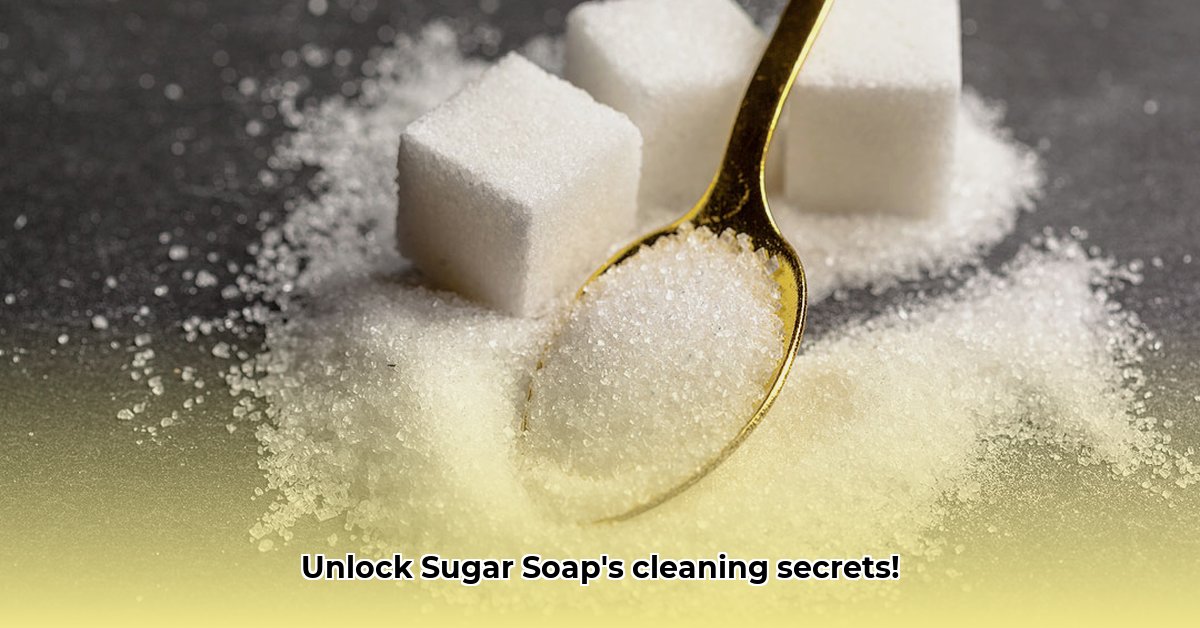
Eish, tired of those pricey cleaning products that don't quite cut the mustard? Let's chat about sugar soap – a proper cleaning champion that's been hiding in plain sight! It's cheap as chips, surprisingly powerful, and versatile enough to tackle almost any cleaning job. This guide will show you exactly how to use it, from banishing kitchen grease to making your bathroom sparkle. We'll give you step-by-step instructions, top tips for amazing results, and what to avoid (so you don't accidentally kak anything up!). Get ready to say "lekker!" to a sparkling clean home, all thanks to this underrated hero.
Understanding Sugar Soap: What's the Fuss About?
Sugar soap isn't some fancy foreign import; it's a simple but effective mix of ingredients – usually sodium carbonate (washing soda), sodium phosphate, and sometimes sodium silicate. These work together to break down grease, grime, and that stubborn soap scum that drives us all mad. It's way more economical than most commercial cleaners, making it a winner for anyone watching their pennies. But remember, even the best cleaning product needs a bit of know-how for best results!
Where Sugar Soap Really Shines: Mastering Its Uses
Sugar soap is a multi-tasking marvel! Here are some of its best applications:
1. Kitchen Grease: Those stubborn grease splatters are no match for sugar soap. Mix a tablespoon or two with warm water, apply it (wearing rubber gloves, jokkies), scrub gently with a sponge, and rinse thoroughly. For baked-on grease, let it sit for a few minutes before scrubbing. Will it work every time? Almost certainly!
2. Bathroom Soap Scum: That annoying film on your shower doors and tiles? Sugar soap comes to the rescue. Mix your solution, apply, scrub gently, and rinse extremely thoroughly. You might be surprised how much rinsing is needed to ensure no residue is left.
3. Pre-Painting Preparation: Before painting, cleaning the surface is crucial. Sugar soap helps remove dirt, grease, and loose paint, ensuring a smooth finish. Clean thoroughly, rinse, and let it dry completely before you start painting.
4. General Cleaning: Sugar soap's versatility extends beyond the kitchen and bathroom. It's great for tiles, walls (test in a hidden area first!), and even floors (test first, remember!). Always rinse thoroughly. Is it the best cleaner for everything? No, but it's surprisingly good at a lot!
Surfaces to Steer Clear Of: When Less is More
Sugar soap’s slightly abrasive nature means it's not suitable for everything. Avoid using it on:
| Surface | Risk of Damage | Best Alternative |
|---|---|---|
| Unsealed Wood | High | Mild soap and water |
| Soft Metals (e.g., brass) | Medium | Specialized metal cleaner |
| Delicate Painted Surfaces | Medium | Gentle soap and water |
| Polished Surfaces (e.g., granite) | Medium | Specialized cleaner for polished surfaces |
Always test a hidden area before applying liberally. This prevents costly mistakes!
DIY Sugar Soap: A Homemade Alternative?
Want to try your hand at making it yourself? Here's a simple recipe, though the cleaning power might vary slightly from commercial products:
DIY Sugar Soap Recipe:
- 1/4 cup washing soda (sodium carbonate)
- 1/4 cup borax
- 1 tablespoon liquid dish soap
- 2 litres hot water
Mix thoroughly. Let it cool before use.
Safety First: Smart Cleaning Practices
- Always wear rubber gloves to protect your hands.
- Ensure good ventilation.
- Rinse thoroughly to prevent residue. This is crucial, especially with the DIY version.
Troubleshooting: Tackling Common Problems
- Streaking: Inadequate rinsing is likely the culprit. Rinse again, thoroughly.
- Lingering residue: More rinsing is needed!
Sugar soap is a fantastic cleaning tool, but responsible use is key. By following these guidelines, you can achieve a sparkling clean home. Remember to always test a small, hidden area first before tackling a larger surface. Happy cleaning!